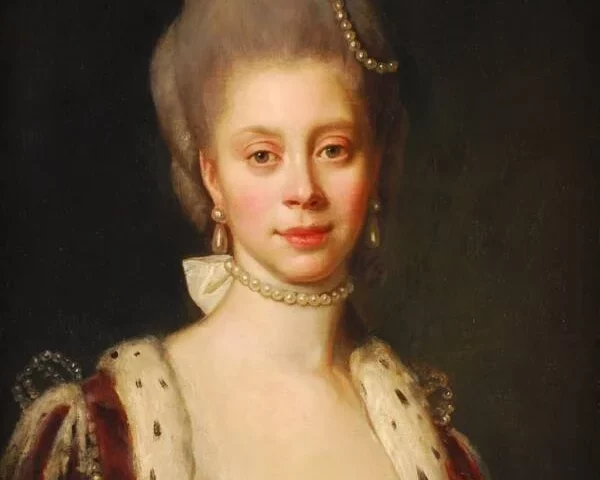By Spy Uganda
On May 19, 1744, Charlotte of Mecklenburg-Strelitz, originally named Sophie Charlotte, was born. Queen Charlotte was also known as the Electress of Hanover and Queen Consort of Hanover.

Mecklenburg-Strelitz was a dukedom of the Holy Roman Empire in northern Germany.
Princess Elizabeth Albertine Saxe-Hildburghausen was the youngest daughter of Duke Charles Louis Frederick of Mecklenburg-Strelitz, also known as Prince of Mirow.

Queen Charlotte is descended from a black branch of the Portuguese royal line, notably Alfonso III and his black moor concubine, Ourana.

Alfonso III took Faro from the moors in the 13th century. He also asked that the governor of Faro’s daughter marry him. They gave birth to three children.

Language was crucial to Queen Charlotte’s education; she spoke French, German, and eventually English, as well as natural history and botany. Her schooling was thought to be commonplace.
Charlotte and King George III were married when she was 17 years old. After his grandfather died, King George assumed the throne at the age of 22. Because of Charlotte’s ignorance of power structures and the conventions that come with life as a major royal person, King George’s mother thought she would be an excellent marriage possibility. Charlotte and King George married on September 8, 1761, after spending several months at sea travelling from Germany to London.

The pair were huge fans of German music. On January 18, 1765, Leopold Mozart released six sonatas penned by Wolfgang, known as Mozart’s Opus 3, which were dedicated to the Queen.
The King and Queen received their first child, a son named Prince of Wales, on August 12, 1762. He went on to become King George IV. The King and Queen had 14 further children. 13 survived to adulthood, while two died while still children.
She was fiercely protective of her children, and she kept her girls close by. As a result, some of them married later in life.
Queen Charlotte struggled to adjust to her new position due to conflict with her mother-in-law. Queen Charlotte’s activities were closely monitored and reported to her mother-in-law, Princess Augusta.
Queen Charlotte wielded little political power, and she did so in a quiet and submissive manner. She was noted for treating her employees with respect and kindness. She kept herself occupied with German matters.
King George III suffered from one of numerous spells of mental sickness in 1788. Though the first outburst was hidden from her due to Princess Agatha’s decision, Queen Charlotte was aware of the others.
Queen Charlotte secluded herself from King George III due to her husband’s illness; they slept in separate chambers and did not take meals together. King George’s unpredictable behavior alarmed Queen Charlotte. Queen Charlotte was deeply impacted by the King’s illness. She got unhappy and retreated from previously enjoyable pursuits. The Queen sought safety by relocating to a new home and tending to her gardens.
Queen Charlotte grew acquainted with distinct botany as new species of plants and flowers were introduced. In her honor, the South African flower Bird of Paradise was christened Strelitzia reginae.
Queen Charlotte and Queen Marie Antoinette maintained a close bond by frequently writing to one another. Marie Antoinette told Queen Charlotte about the beginnings of the French Revolution. Queen Charlotte was obviously disappointed when Marie Antoinette was executed.
In 1811, King George III fell very ill. As a result, Queen Charlotte was named as his legal guardian. Their son, the Prince Regent, ascended to the throne. Queen Charlotte avoided seeing her husband after 1812 due to King George’s aggressive conduct.
The death of Queen Charlotte occurred on November 17, 1818. After 14 months, King George III died. With 57 years of service, Queen Charlotte was the second longest-serving consort in British history.
Queen Charlotte’s treasures were handed upon her eldest son, Prince Regent. Her other possessions were also auctioned off. Christie’s snuff, furniture, and apparel were all sold.
Queen Charlotte has received various posthumous accolades, including a statue at Queen Square in Bloomsbury, London, and at Charlotte/Douglas International Airport in Charlotte, North Carolina.








